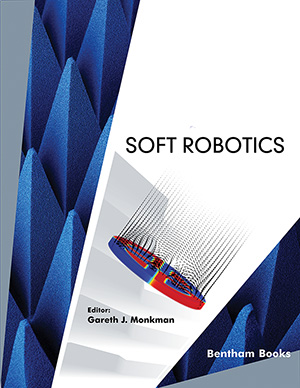Abstract
Soft continuum robots are highly deformable and maneuverable manipulators.
Jamming, as a phenomenon, enables amorphous systems to switch reversibly
between solid-like rigidity and fluid-like plasticity, has been exploited for a novel
continuum robot design. This novel Soft Articulated Granular Manipulator (SAGM) is
suitable for complex linear as well as rotary motion. This continuum soft robot features
a continuous backbone connected to the rotating mechanism. The actuation mechanism
is based on the jamming of granular material. This highly articulated manipulator is a
new type of continuum manipulator, which combines a wide range of soft actuation
advantages and thus exhibits excellent comprehensive performance. It is required to
perceive a precise model of the soft link for dynamic motion analysis. As vibration can
be generated in the articulating operations, this paper studies the mathematical model
for the arm undergoing planar flexural deformation. This rotation creates a variable
axial force, and this causes difficulty in solving the differential equation. Due to free
vibration analysis, the transfer matrix method based on the Euler-Bernoulli beam
differential equation is implemented, and the soft link is discretized with a constant
axial force for each element. This paper includes the design, modeling, kinematic and
dynamic analysis of this soft continuum robot. The dynamic results are compared with
FEM, Rayleigh–Ritz, and ADAMS models. These show agreement despite low
computational costs and it gives us a wide exposure towards real-time applications.
Keywords:
Continuum robot, Natural frequency, Planar rotary arm, Cross sectional area, Soft actuator, Transfer matrix method.

